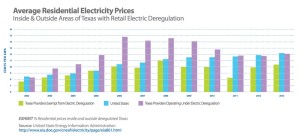 At any given movement, energy supplied to the electric grid must exactly match energy demand. Traditionally, the supply changes to meet demand, but that’s not the only way to balance the equation.
At any given movement, energy supplied to the electric grid must exactly match energy demand. Traditionally, the supply changes to meet demand, but that’s not the only way to balance the equation.
Demand response is an energy management strategy that solves grid challenges by focusing on electricity demand and usage, not production. It’s a valuable tool for affordably addressing the challenges of peak demand.
Peak demand is the point where demand is highest on a given day, month or year. These peak demand periods require extensive management, most notably during summer months. Without such, there are severe consequences; costly consequences like brownouts or blackouts. In addition to daily human activities that require electricity, blackouts can cause serious economic disturbances. In 2003, a New York City blackout alone cost the city more than $750 million in lost revenue.
The majority of utilities and energy providers handle these peak demand periods with outdated, supply-side solutions: “peaker” power plants. Peaker power plants are such that they only come online, as needed, during periods of peak demand. In addition to the polluting nature of these peaker plants, they are incredibly expensive to build and operate. They are brought online solely in preparation for peak demand events. But in order to do this, these power plants must expensively remain in standby mode to be ready to fill energy gaps at a moment’s notice. These peakers account for 10%-20% of electricity costs in the U.S. due to peak demand during only the top 100 hours on the electricity system.
Demand response is the clean, cost-effective alternative we’ve all been waiting for:
- Consumers save money; they receive compensation in the form of rebates for electricity demand reductions and/or free access to smart technology.
- Electricity providers avoid the high costs of bringing current peaker power plants online.
- It reduces or eliminates a need for future natural gas power plant developments that are expensive and slow the inevitable transition to clean energy.
- Demand response utilizes smart meters, thermostats and other devices which allow for better energy management and create higher grid stability.
So, how does it work?
Many devices – such as air conditioners, water heaters, and refrigerators – have daily energy demands. Naturally, they cycle on and off periodically throughout a day. Demand response uses systems and technologies that are able to carefully track and regulate these daily fluctuations; it simply shifts and reduces consumer electricity usage during peak demand periods as a response to time-based rates or other forms of financial incentives.
Here are 3 case studies that display the potential of demand response:
San Antonio
In San Antonio, CPS Energy’s Save for Tomorrow Energy Plan (STEP) achieves 193 total Mega-Watts (MW) of load shedding from demand response initiatives – about half from large industrial and commercial customers and half from approximately 125,000 residential customers. Both groups are called on about 15-20 times per year to reduce consumption during peak demand events.
Participating large industrial and commercial customers receive compensation for reducing electricity demand for 2-3 hours, which is sometimes achieved by temporarily shifting operations to a different time of day. For residential demand response, customers have access to a program that gets them free Honeywell smart thermostats, or an $85 rebate to purchase a different smart thermostat. They also get $30 at the end of each summer for participating in the program. The utility can then reach out remotely and control the cycling of participants air conditioning units. Those units will run less during the event period, but aren’t off the entire time.
These electricity savings from demand response represent the majority of current contributions to its ambitious goal reducing 771 total MW by 2020. As of 2016 CPS stands at 411 total MW towards that goal, of which demand response accounts 47%. The remainder comes from energy efficiency improvements and local solar installations.
Palo Alto
The City of Palo Alto Utilities ran a trial in 2015 called the Demand Response Pilot Program. The period between May 1st and October 15th included 4 demand response events. The results indicate that participants reduced their aggregated demand between .6-1 MW per event. The total savings were 10,312 kilowatt hours during the trial.
Tampa
For Tampa Electric, a case study looked at the results from its Energy Planner program that began in 2005. Since 2008, results show that demand response works. They demonstrated significant average energy reductions per participant: 3.1 kilowatts during winter peak and 2.0 kilo-watts during summer peak. Furthermore, participants saw lower electricity prices 87% of the time. There was also a 99% customer satisfaction rate in terms of comfort during reduction events.
Logistically, demand response is a solution that solves energy grid problems. It does this more effectively and in a much cheaper way than building new power plants or bringing existing ones online. More importantly, climate change is a disastrous reality that demands both long-term and immediate solutions. Demand response isn’t a permanent solution, but it deals with reality.




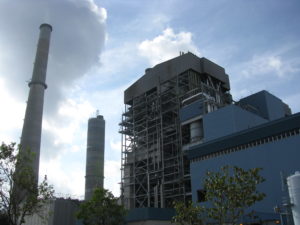
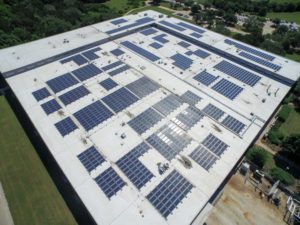
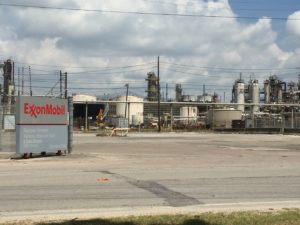


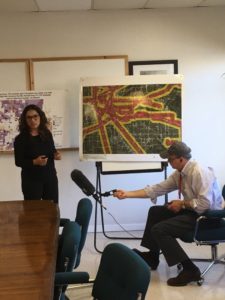

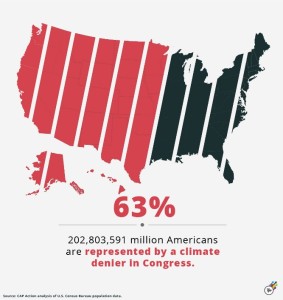
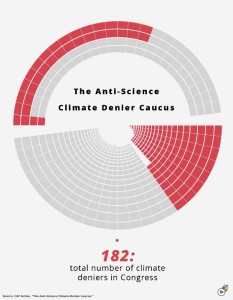 182 members of Congress don’t believe the science behind climate change: 144 members in the House of Representatives and 38 members in the Senate.
182 members of Congress don’t believe the science behind climate change: 144 members in the House of Representatives and 38 members in the Senate. 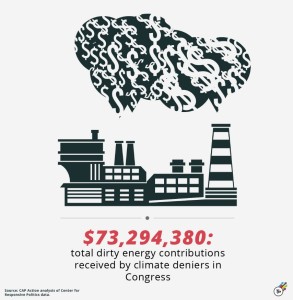 In the analysis, CAPAF also looked into dirty energy money’s influence over Congress members. They found that climate deniers in Congress received more than $73 million in contributions from coal, oil, and gas companies. This is an
In the analysis, CAPAF also looked into dirty energy money’s influence over Congress members. They found that climate deniers in Congress received more than $73 million in contributions from coal, oil, and gas companies. This is an 
